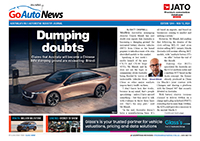Make / Model Search
News - TeslaTesla Model X involved in fatal Autopilot crashCrash course: Tesla is claiming the victim of a recent car crash ignored multiple warnings to take over driving before colliding with a crash attenuator on a California highway. Driver involved in US Autopilot crash ignored multiple warnings, according to Tesla2 Apr 2018 TESLA has said the driver involved in a fatal Model X crash had the Autopilot semi-autonomous assistance system engaged, however they ignored a series of warnings to take over operation of the vehicle in the seconds leading up to the crash. The incident occurred on March 23 on a highway in California, in which the Model X struck a crash attenuator, a safety barrier that is designed to reduce the impact into a concrete lane divider. The attenuator was much smaller than normal due to a previous crash where the attenuator had not been properly replaced. According to Tesla – who was able to retrieve the driving logs from the destroyed car – at the time of the crash, Autopilot was engaged with the adaptive cruise control follow distance set to minimum. The driver received several visual and one audible warning prior to the crash, and according to logs, their hands were not detected on the wheel for six seconds leading up to the collision. Tesla said the driver had around five seconds and 150 metres of unobstructed view to the crash barrier, and due to the attenuator not being replaced, the car-maker said it has never seen such a level of damage on a Model X from any crash. The manufacturer has said it is “incredibly sorry” for the victim’s family, describing it as “devastating”, but remains adamant that its Autopilot technology is still safer than a regular driver. “Tesla Autopilot does not prevent all accidents – such a standard would be impossible – but it makes them much less likely to occur. It unequivocally makes the world safer for the vehicle occupants, pedestrians and cyclists,” the company said in a blog post. According to company data, the same stretch of highway where the crash occurred has been driven roughly 85,000 times with Autopilot engaged, and around 20,000 times since the start of the year, with no known accidents. While the average automotive fatality in the US occurs every 86 million miles of driving, in Teslas equipped with Autopilot, that number increases to once every 320 million miles. The Tesla crash occurred only weeks after an Uber self-driving prototype vehicle hit and killed a female pedestrian in Tempe, Arizona, forcing the ride-sharing company to suspend its tests. At the time of the crash, the pedestrian was crossing the road at night outside of a designated crossing area, while footage released after the incident shows that the car made almost no effort to stop for the pedestrian. Tesla’s fatal crash isn’t the first involving its Autopilot system, which was found to be partially at fault for an incident on a Floridian highway in 2016, which saw a Model S equipped with Autopilot colliding into, and passing under, a truck trailer.  Read more |
Click to shareTesla articlesResearch Tesla Motor industry news |











Facebook Twitter Instagram